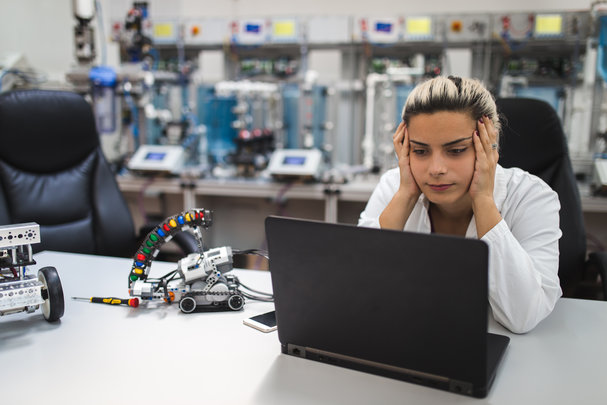
Credit: chabybucko/Getty
Coronavirus cutbacks could reverse hard-fought equity gains in STEM workforce
Women’s jobs are “the first to go" in pandemic-related cuts.
25 May 2020

chabybucko/Getty
Female university staff have already lost more jobs, more paid hours, and more career opportunities than their male colleagues in Australia since the pandemic hit, according to a new report.
But there may be worse to come, because women are also 50% more likely to hold at-risk casual and short-term contract positions.
Major pandemic-related funding cuts could slow down or even "reverse" equity gains made in recent years, reinforcing a male majority in senior and leadership roles, the report says.
The report investigating the effects of the pandemic on women in the science, technology, engineering and maths (STEM) workforce in Australia predicts that the pandemic will have more long-term negative implications for women in STEM than men. A recent US and German study came to similar conclusions.
"The people who are most at risk are those at junior levels - the pool of future leaders," says Kylie Walker, chief executive of the Australian Academy of Technology and Engineering, which co-led the report. "These are the people who we are relying on to get us through the pandemic, whose jobs are in question, who might not be able to continue their work."
Fewer jobs, fewer hours
The report was produced by the Rapid Research Information Forum, a group of 35 organizations in the research sector, chaired by Australia’s Chief Scientist, Alan Finkel, at the request of the national science and industry minister, Karen Andrews.
It states that, across the whole Australian workforce, among those who remained employed, women’s average paid working hours fell by 4.4 hours a week, while men’s fell by 3.7 hours between February and April 2020. People from non-English speaking backgrounds lost 5.8 hours.
In the professional, scientific, and technical services industry, job losses of 5.6% were recorded, with women hit the hardest – their positions are down 6.3%, while men have experienced a 4.8% drop.
Pre-pandemic, women represented just 12% of professorial-level academics in Australia, but held 47% of the casual jobs in the university workforce – making them "the first to go", says the report.
Women in mathematics were found to be particularly vulnerable, with 64% in casual jobs.
Some more housebound than others
The vulnerability of women in STEM is the result of systematic barriers to success, particularly for those with diverse backgrounds, the report states.
Since the pandemic hit, female professionals have been bearing the brunt of home-schooling supervision, meal preparation, and general housework, on top of managing their own paid work, according to the report.
This made them more housebound than their male peers. During an unspecified two-month COVID-19 period, the report states that just 16% of female staff in science, medicine, and engineering faculties visited their campus, compared with 28% of males.
Productivity is also down. Prior to COVID-19, women and men were producing similar amounts of research publications each year (although women published fewer papers over their entire careers due to career disruptions). During the pandemic, women’s publication rates have dropped, while men’s have increased.
Moving to remote technologies is one aspect of the pandemic in which women in STEM have fared better than men. The report found that women led the early adaptation of university teaching to online platforms. However, they did so because they have “previously faced a disproportionate increase in workload to develop materials for online teaching and [have] taken on extra teaching to cover the loss of casual staff”.
Equity gains risk reversal
As universities and other research institutions in Australia reckon with major pandemic-related funding cuts, progress made in recent years to fix the gender imbalance in STEM may slow down or, according to some institutions, “begin to reverse”, leaders of the Science in Australia Gender Equity (SAGE) program told the Rapid Research Information Forum.
SAGE requires participating organizations to collect, analyse, and present data on gender equity policies and practices, while designing programs to address them.
“We have heard, anecdotally, that a number of major participants have indicated that they are already looking to cut back some of the measures that they have introduced recently,” says Walker.
“That might be something like cutting back on paid parental leave and going back to the minimum amount required by legislation, or it might be putting on hold plans to build a new childcare centre or putting on hold a commitment to extend contracts or make part-time positions permanent.”
